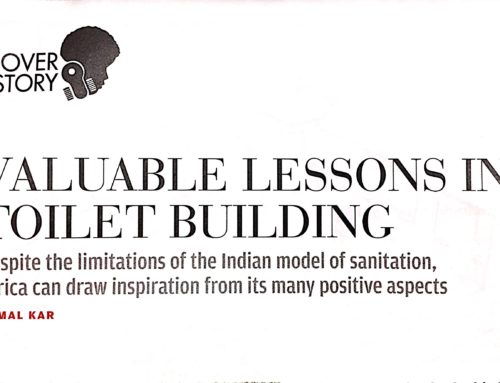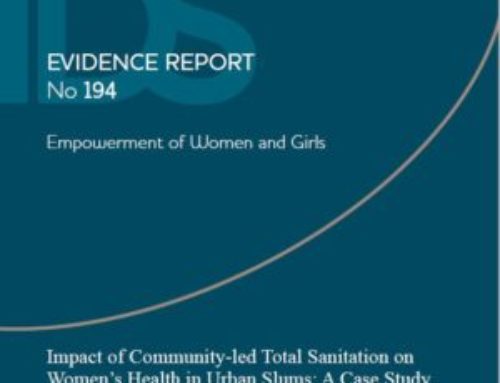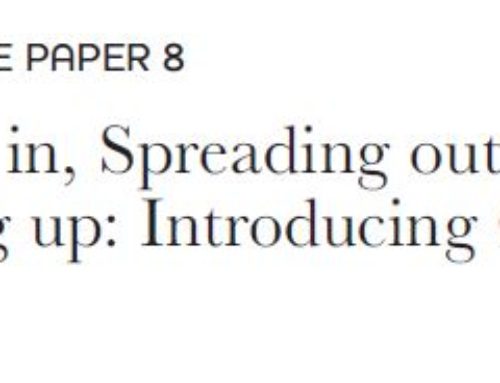Impact of Community-led Total Sanitation on Women’s Health in Urban Slums: A Case Study from Kalyani Municipality
IDS Evidence Report 194
Publisher IDS
Download this publication
This Evidence Report seeks to understand the health and other impacts of slum women’s access to sanitation through the Community-led Total Sanitation (CLTS) approach. It also examines the process through which open defecation free (ODF) status was attained in two different slum colonies, the resulting health impacts and the collective action that took place around both sanitation and other development benefits.
The study was conducted in the slums of Kalyani, a Municipality town located 55km north of Kolkata, the capital city of West Bengal state in India. From an area plagued with rampant open defecation, the slums of Kalyani were transformed into the first ODF town in India in 2009. This was achieved through the CLTS model that focused on motivating the community to undertake collective behaviour change to achieve ‘total’ sanitation and an ODF environment. This was in sharp contrast to earlier, top-down approaches to the provision of toilets, which had failed to ensure ownership or usage by the community.
The benefits of CLTS to the community were not limited to changed sanitation behaviour and an end of open defecation – there were significant development and health gains beyond sanitation. Women’s health in this study has been viewed not just in terms of the presence or absence of disease burden on the physical health of women but also in terms of their socio-psychological wellbeing resulting from reduced risks and a wide range of benefits accruing from better sanitation and hygiene practices and facilities.
The study also focused on exploring the extent to which the CLTS process can be said to have empowered women. As experiences of good health and wellbeing are affected by factors in the external environment, namely the role of the local government, women’s access to health services and the involvement of multiple sectors, these issues were also considered, in order to understand the overall health status and experiences of women in Kalyani slums.
Related files: ERB194_AccompanyingBrief
This was first published here.







Leave A Comment